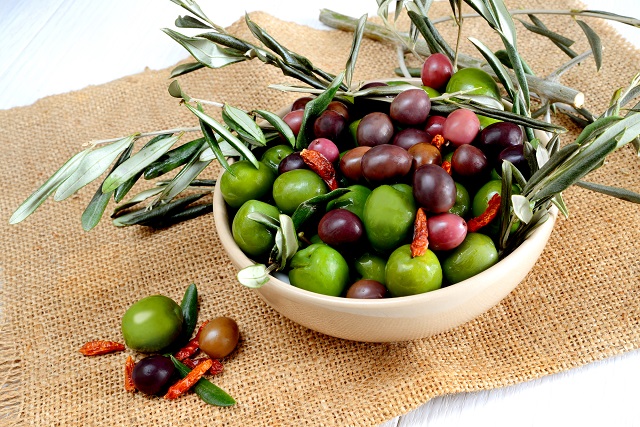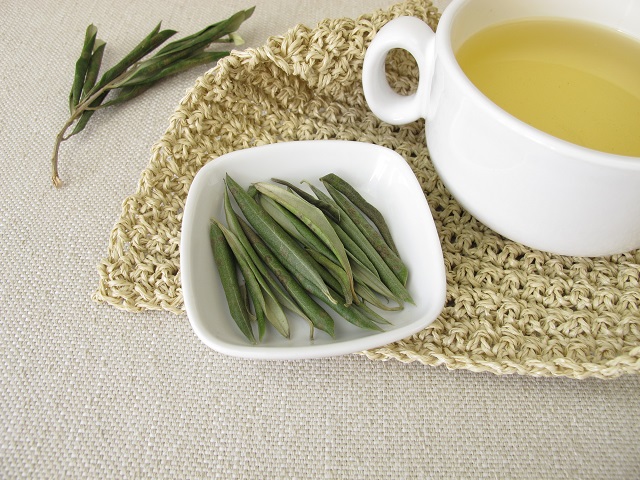You probably know the types of olives, even if you don’t like them all. Although different, the green, purple and black versions are fruits of the same plant, the olive tree.
In addition to having a strong flavour, appreciated as a snack, this food also has health benefits. Its consumption can generally be good for the heart, stomach and bones.
It is also a source of antioxidants, so it protects the body’s cells and tissues—all this not to mention its anti-inflammatory action.

Black, purple and green olives
But be careful because canned green and purple olives are usually sold with much salt. Therefore, consumption of these types is not advisable for people with hypertension.
Table of Contents
Types of olives
- Green olives are harvested from the olive tree when they reach their standard size and are in maturation. But it’s no use taking one from the tree and putting it in your mouth, as it must go through some processes to lose some bitterness at this stage.
- Purple or mixed olive: it is called eclectic because it does not only reach the purple colour but also shades between pink and brown. It is harvested before completing the ripening.
- Black olives: after being fully ripe, the olives take on a black or reddish-black colour. At this stage, it is also sweeter and has more energy-rich oils.

These three types of table olives are differentiated by the degree of ripeness. In other words, it is the same fruit but in different stages of ripening.
It is also worth mentioning that the fruit of the olive tree has other versions. However, these three classifications were established by the book Codex Alimentarius (2010) and the International Olive Oil Council (IOC), the body regulating oils and olives internationally.
Benefits
Olives have low sugar content, are rich in vitamin E and are a good source of fibre. In addition, the composition of the fruit of the olive tree has essential minerals for the body, such as potassium, calcium, phosphorus, magnesium, iron and zinc.
Added to these nutrients, the famous Brazilian snack also has a range of polyphenols and essential oils. All of this results in the various health benefits of food.
Protect cells and tissues.
Two substances in this food play this role: vitamin E and phenolic compounds. With them, free radicals cannot cause oxidation (destruction) of cells and tissues.
Consequently, olives help prevent degenerative diseases such as cancer, cardiovascular disease and problems related to the nervous system.
Furthermore, they can contribute to the prevention of premature skin aging and age-related macular degeneration. In the latter case, it works by improving and protecting vision.
Lowers bad cholesterol
Olive fruit is composed of unsaturated fats of the monounsaturated type, including oleic acid, better known as omega-9. These substances increase good cholesterol (HDL) and reduce bad cholesterol (LDL).
Another benefit comes from Oleuropein, which prevents LDL from oxidizing. But you might be wondering why this action is beneficial if it contains an effect against bad cholesterol.
Well, once they are changed, LDL molecules have more capacity to cause vascular disease. While the substance prevents this result, it also lowers total cholesterol levels.
As a result of all these activities, heart health is strengthened. This is because it is possible to avoid cardiovascular diseases such as cardiac arrhythmias and atherosclerosis.
It helps the digestive system
The digestive power of this fruit will convince you if tissue, cell, and heart care are not enough to include the types of olives in your daily life.
Due to the presence of dietary fibre, the digestive system is benefited. Although not digestible by the body, this compound helps in the digestion process and also helps in the formation and elimination of feces.
This benefit is even more special for those with a lazy bowel, as it is of great importance even for colon cancer prevention.
It is also worth mentioning that the fibre content in green olives is higher than in other versions, followed by purple and black. The justification for this is that as the fruit matures, the fibres wear out.
In addition, Oleuropein contributes to the health of the intestinal tract. The tricky name substance prevents microbial growth in the intestine, preventing bacterial infections.
Prevents inflammation
Once again, the Oleuropein found in olive fruits can help maintain health. This time, the performance is in the prevention and treatment of inflammation.
In general, inflammatory processes are common and natural in the body. However, they are considered a problem when found in large quantities or when it is a chronic inflammation.
Cardiovascular diseases, autoimmune diseases, cancer and arthritis are some problems that cause inflammation. They can be prevented or treated with the help of olives and all their by-products, such as extra virgin olive oil.
Take care of bone health.
According to a study published in the British Journal of Clinical Pharmacology in 2013, olives are part of the diet of the Mediterranean population. And it is precisely this same audience that has good bone mass.
For scholars, the fruit contributes to bone health through polyphenols that protect bone mass against inflammation. Consequently, in the long run, it helps to prevent osteoporosis.
Olives fattening?
Without further ado: yes, she gets fat. According to the Brazilian Table of Food Composition (TACO), 100 grams of canned black olives has 194 calories.
Green olives, in the same amount, have 137 calories. Therefore, they are high-calorie fruits and, if consumed in excess, help in weight gain.
What are olive leaves for?

Recent studies have turned to discovering and unravelling the properties of olive leaves. As a result, researchers found benefits to help treat hypertension, diabetes and hyperlipidemia, characterized by the accumulation of fats in the blood.
Through tea made from olive leaves, it is possible to prevent cardiovascular disease and increase red blood cells ( improving the immune system ).
Traditionally, the infusion is also used to treat respiratory illnesses such as the common cold.
How to make tea from olive leaves?
- 1 litre of filtered water
- Three tablespoons of olive leaves.
Bring the water to the fire and allow it to boil. Then add the leaves, turn off the heat, cover the pan and wait between 10 and 15 minutes. Then strain the drink and drink it three to four times a day.
Healthy olive pate
A pate goes with any meal of the day and can even be any protagonist. With that in mind, we’ve separated three versions of olive pate to enhance your day-to-day.
All options are natural, vegan and healthy. Also, they are listed according to their difficulty level. So, choose the one that best suits your preferences and the stock of ingredients you have at home!
Black olive pate
- 250 grams of black olive
- 250 grams of tofu
Very quick and easy to make, this pâté only takes two ingredients and is an excellent choice for vegan snacks!
Green olive paste
- 1 cup of green olives
- 1/4 cup of water
- Three tablespoons of olive oil
- Salt puff
- Seasoning to taste ( basil, parsley, chives etc.)
- Two tablespoons of curd or mayonnaise.
Mussinha’s recipe is vegan, as it uses vegetable curd cheese. But if you want, you can put the ingredients you find in the pantry, even if they are of animal origin.
Purple olive pate
- 1 cup and ½ of cashew nuts
- 1 cup pitted black olive
- Three tablespoons of coconut milk (add little by little – observe the texture while mixing in a blender)
- ½ clove of garlic
- One teaspoon of salt
- Basil leaves.
No milk, no egg and no gluten. In other words, the version taught here is ideal for vegans or celiacs. The video has two recipes, the second being olive pate.
My name is Ellie Lauderdale, MD and I am USA based professional Nutritionist .
I am a Registered Dietitian Nutritionist and board certified specialist in sports dietetics who is trained in integrative medicine. I have worked with hundreds of clients, from those suffering with chronic disease to professional and olympian athletes. My goal is to help optimize you from the inside so that you can feel, perform, and look your best on the outside.


